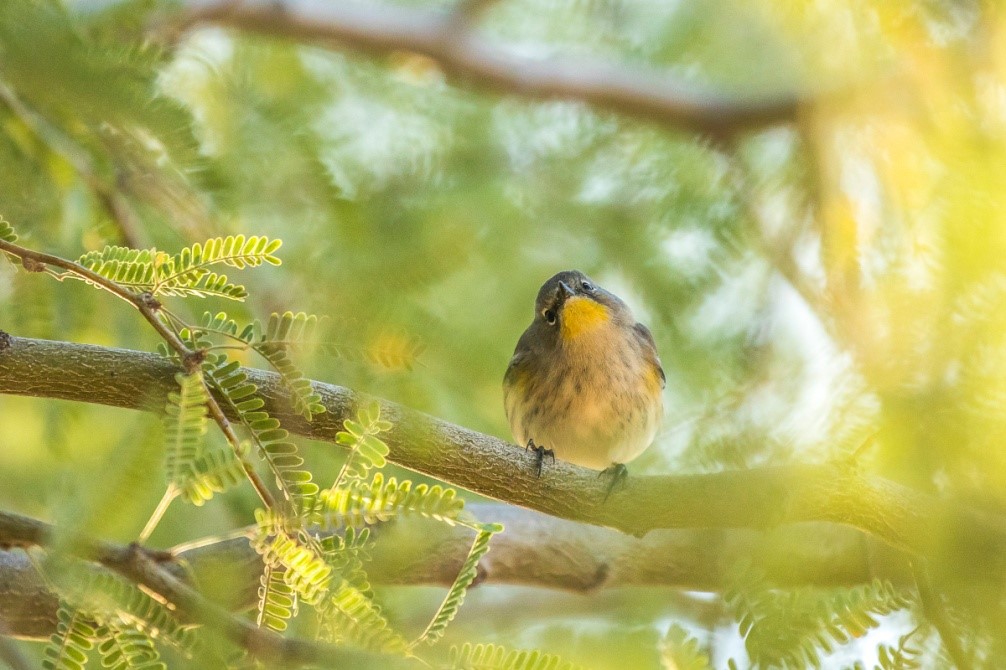The Art and Science of Enjoying the Birds in Your Own Backyard
By Joan E. Strassmann
By Anne Kilgannon
Find your most comfy chair and take your time reading about slow birding, just as you would if selecting vegetables for a Slow Food dinner menu while picking your way through a Farmers Market. Those vibrant bunches of greens, ah, that crusty bread, and oh, a new cheesemonger; let’s stop for a taste! If you were to take a walk in the park with Joan Strassmann, you would similarly be treated to a long list of wonders: Look, a house wren just there—did you hear its distinctive song; and one of her favorites, a Dark-Eyed Junco in that bush—did you notice how it stays undercover; and don’t miss the Cooper’s Hawk scattering all the smaller birds in its shadow—let’s see if we can find its plucking perch; it should be nearby. She would soon have you looking more intently, asking more questions, and then going home to look up ornithological studies to discover new depths about birds you thought you knew. But with no racing around, packing travel bags or airport travails.
In this approach to birding, birds are much more than their names on a list. Contrary to most birding magazines, even the most erudite, Strassmann advocates sticking close to home and not jaunting over the globe, rushing from one advertised hot spot to another, no matter how glittering the allure. The joy of birds is that they are everywhere. And in her view, the best of birds are right where you live, where you can observe them every day and through the seasons and really get to know their lives as neighbors. You can rig up feeders and water sources, plant your garden to attract them with edible berries, and put up nest boxes so you can see their life cycle of courtship, nesting, and the raising of the young ones. There will be enough drama to keep anyone enthralled. And over time all these observations will add to your knowledge and stir new questions to ponder, an endless cycle of relationships.
Again and again, while looking out her window or on a walk in her local park, she stops to ask, what is that bird doing? What is really happening here? And why? She doesn’t tire of seeing robins, House sparrows, and even starlings; all are interesting, and all are more than a name. All birds are living examples of evolutionary advantages with underlying genetic codes and complex environmental relationships. There is so much more to know. She is full of questions; her scientist mind is abuzz with curiosity. Bird by bird—each chapter is devoted to one species at a time—she alerts the reader to numerous studies that address our queries. Strassmann is a professor of animal behavior, at Rice in Houston and now at the University of St. Louis and has published two hundred scientific articles as well as supervised student research projects covering many different bird species. She poses some of those same Ph.D. questions for us to ponder—some seem simple but required months and even years of close hands-on study and observations, plus DNA testing, extensive banding, and ingenuity, not to mention dare-devil tree climbing. And yet she has confidence that we “ordinary” birders will be enthralled, too. And we are! She knows we want to get behind the short quips in our guidebooks and learn about all the strange and wonderful biology and behaviors of birds. Our sense of wonder is ignited and fed if you’ll excuse a mixed metaphor.
The book is organized by chapters on sixteen different commonly found birds within a twenty-mile radius from Strassmann’s home; and here is my only caveat in recommending this book: she lives in Missouri, so several of her common birds would not be ones we could observe without a very long drive. (Her descriptions are so tempting, though, that a trip to the mid-West starts to sound very alluring even though it contradicts her guiding premise that we should all stay home!) Still, her points are the same: take the time to follow the bird that you see through the seasons and through its life span, learn how it feeds itself and cares for its family, how it uses its local environment, and how you may contribute to its survival and well being. She also includes short chapters on four different habitat areas that offer particular bird-watching experiences. Though, again, these are in her home territory, we can find our own version nearby. (But oh, to see cardinals and mockingbirds!) On these walks she points out the birds as if we were with her—and we feel almost as if we were—and what they might be doing, and why.
She is a stimulating companion…not a show-off or over-our-heads type, but someone who brings you along with her enthusiasm, whether you’ve been birding for years or a beginner. She is always an eager student who wants to know more about everything; despite her many years of study, she is still searching, asking questions, and finding something to marvel at and enjoy. Joy: the why of bird watching! Reading this book will only add to your dedication.
Photo credit: Yellow-rumped Warbler by Morgan Quimby, Audubon Photo Awards








